 Leading Blog | Posts by Month |
 Leading Blog | Posts by Month |
10.31.23

LeadershipNow 140: October 2023 Compilation
See more on
Posted by Michael McKinney at 08:39 AM
10.30.23

Unlocking the Secrets of Ideal Relationships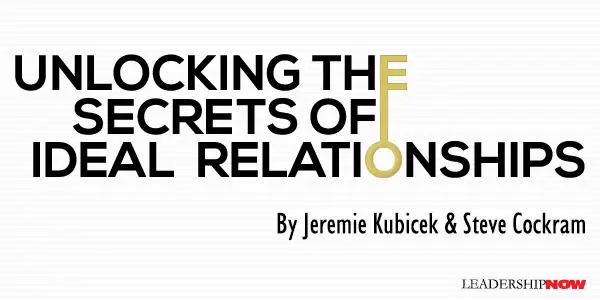
COMMUNICATION is a two-way process. It is imperative that we understand how to transmit and receive in order to have the appropriate communication that builds stronger relationships. The Evolution of Communication From the hieroglyphics of ancient Egypt to the tweets of today, communication has always been humanity’s compass. By the firesides of our ancestors, stories shaped cultures and defined communities. Today, we navigate through torrents of emails, texts, and posts. Yet, one thing remains unchanged: our innate need to connect meaningfully. If we do not treat communication as a strategic tool, then we just might become accidental and not intentional, which will continue to erode the power of relationship. Every conversation is an art form. It involves a choreography of words, gestures, tones, and even the silences in between. Each dialogue is colored by personal histories, beliefs, and emotions. Without intention or clarity, such interactions risk devolving into cacophonies rather than harmonious exchanges. We have tried to codify these interactions with The Communication Code. We are seeing the need in this viral landscape to teach people how to verbalize their needs practically inside each conversation to ensure that expectations are met and not discounted. Our Inherent Need to Connect Humans are wired to seek connections. Our success, survival, and emotional well-being hinge on our ability to bond. In today’s hyper-connected yet often impersonal world, nurturing these bonds demands renewed focus and commitment. It requires us to be thoroughly intentional in a world that awards the laziness of accidental living. It’s about ensuring messages aren’t just sent but are received as intended. It’s crafting an environment where interactions foster understanding, trust, and mutual respect. Imagine if you had a language and a set of code words that were used as a guide to help each party minimize the chance of creating dangerous misunderstanding. We are writing this because of our own experiences and want to save you from what we have gone through ourselves. Tales of Misunderstandings In a bustling London café, two business partners met after not being in the same city for a few months. One narrated a business success, expecting to celebrate. The other, thinking they were helping, offered critique on a better way to have held the meetings. Expectations were unmet, and voices were raised. Why was it so hard to celebrate? Why didn’t the business partners know how to set up the desired communication so that expectations could be met? Such instances are commonplace and emphasize the need for alignment in conversational expectations. Decoding “The Communication Code” Because of the above episode, we have created a system that allows each of us to have a code word that allows people to understand the expectations of the other person. It’s called “The Communication Code”. The “code words” are more than vocabulary; they’re signposts, guiding conversations:
Imagine understanding the code word of those closest to you. If you know that someone wants Clarity before Collaboration, then you will begin the conversation by asking clarifying questions. Once the other person feels like you understand them, then they will be open to your Collaboration. The same is true with all of the code words above. Each of us has a desired expectation, but very rarely do we share it with others. If you are given the code words of what others desire, then active listening becomes more automatic than what most experience in daily conversations. Code words are, in essence, packed expectations. If you can both share and discern, then you are on your way to becoming relationally intelligent. The Power of Mastering the Code By mastering “The Communication Code,” one can transform not just individual interactions but entire communities. It becomes the bedrock for harmonious families, efficient workplaces, and more compassionate societies. In a broader sense, mastering genuine communication can bridge societal chasms. From resolving local community issues to diplomatic negotiations on global stages, the principles of effective communication remain paramount. If we can commit to proper communication, then we can unlock relationships through every conversation we have, which might lead to peace at levels unimaginable. “The Communication Code” is a compass for the modern communicator. It’s an invitation to journey back to the essence of genuine connection while navigating the complex terrains of contemporary communication landscapes. By internalizing its tenets, one not only hones their communication prowess but also enriches every facet of their life. Embrace its insights, let every conversation be a bridge, and transform every relationship into a cherished bond.  
Posted by Michael McKinney at 07:54 AM
10.27.23

Improve Your Positive Influence: Eliminate Common Obstacles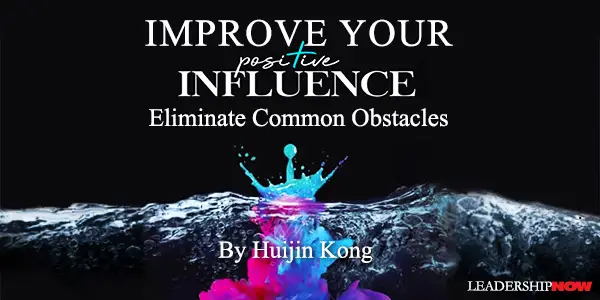
I FIRST encountered this equation in the context of peak performance in the sports world. The interference could come externally but often comes internally in an athlete — freezing up or choking on the spot. Yet others are able to push through interference from pressure or pain to realize their potential for top performance. The equation also applies to our individual capacity for positive influence (+influence). We all have the potential to have a lot more +influence if we address the common obstacles that interfere with achieving our +influence attempts. When the stakes are low — say, we botched the chance to change seats with another passenger on a plane — it’s not a disaster. However, in high-stakes situations, our doubts, self-talk, low awareness, ill-preparedness, and instinct-led execution can make or break our attempts. But with proper investigation and preparation, we can significantly reduce these drawbacks. This means not only making changes in our techniques but also becoming aware of how our internal interference unconsciously limits our choice of approach and, therefore, our impact on others. Here are common obstacles to our ability to have a +influence, along with how to minimize their interference: 1. Doubts. When the solution to a problem isn’t evident, and others don’t seem motivated to investigate one, a sense of futility can set in. It’s very easy to have what CEO Seah Chin Siong of the Singapore Institute of Management calls “goal erosion,” defining it as “Doing what is easy, going through the motions, but not doing the hard things the ultimate mission requires.” While it seems that no one person alone has the power to impact the situation, each person can make an attempt to have +influence. Acknowledging the current reality, including the issues, is a powerful first step. People also tend to give up too early or to not try because of an assumption that may not be valid. Most endeavors struggle with a number of challenges — technical, social, and political. The more ambitious the project, the greater the obstacles. Many people let these challenges and obstacles stop them in their tracks rather than perceive them as inevitable steps to work through. This is especially so when it comes to personal, interpersonal, or organizational issues, which are less straightforward to address. For example, we could be concerned with getting too personal (whether it’s our place to ask, whether she might be offended, and so on). While well-intended, this and other concerns are common obstacles that stop necessary conversations and attempts at +influence from occurring. 2. Self-talk. We have a lot of internal conversations occurring in our heads. The intent of our self-talk is to prepare and process, but it’s not necessarily oriented toward achieving +outcomes. A lot of self-talk is intended to keep us safe and to be considerate of others’ feelings, but it doesn’t prioritize what will raise productivity, satisfaction, and growth for ourselves, others, and the project or company. These instincts need to be interpreted, reconciled, and directed by the command center of our brain to determine the best way forward. If the command center is misdirected, we might over or under influence. When self-talk is linked to the relationship we think we have with the person, a narrowly defined relationship can limit our legitimate influence attempts. If it’s too broad, it may cause us to over-reach. 3. Low awareness. Insufficient awareness, especially of pressures that impinge on the key people who need to think, feel, and act in order for the positive outcome to be achieved, can lead to ineffective or counterproductive influence attempts. For example, a CEO might face pressure from investors and from the board chair, and influence attempts recognizing both will be more effective than something that recognizes only the more vocal concerns. The insightful +influence warrior identifies the key pressure points and then designs influence strategies that relieve that pressure in order to align others to the outcomes. 4. Ill-preparedness. Most people worry and agonize over issues and challenging conversations but don’t necessarily put in the time to prepare for the conversation. Rehearsing the presentation is a far cry from proper preparation for making a +influence. More is needed, including gathering information on the people involved, determining where conflicts may arise, and identifying their possible solutions. Sufficient preparation can more than double the effectiveness of a challenging +influence attempt. A conversation with each stakeholder concerning pressure points and interests can inform any influence attempts. The higher the stakes, the more systematic analysis and preparation will be needed. 5. Instinct-led execution. Instincts are our “innate, typically fixed pattern of behavior in response to certain stimuli.” They’re powerful but can also be misguided. They enable us to respond instantaneously to danger and opportunity but are problematic when the situation or stakeholders differ from those past situations. Following our initial instincts can result in avoidable mistakes. These days, it’s safe to assume that our current or future challenges are unlike those from the past. The people around us are different, and the issues we confront are likely to be more complex. Like it or not, we need to deal with diverse, conflicting, and challenging contexts. For example, American culture often finds confronting a conflict acceptable, but many Asian cultures, for example, might be offended by a direct confrontation. Instincts aren’t always necessarily right or wrong. Take the time to sense more deeply what’s really going on and consider different ways to address the situation. The best solutions inevitably leverage logic and emotion to have +influence on ourselves and others. To find out your +influence effectiveness, take this simple +influence assessment.  
Posted by Michael McKinney at 06:04 AM
10.26.23

Leading Thoughts for October 26, 2023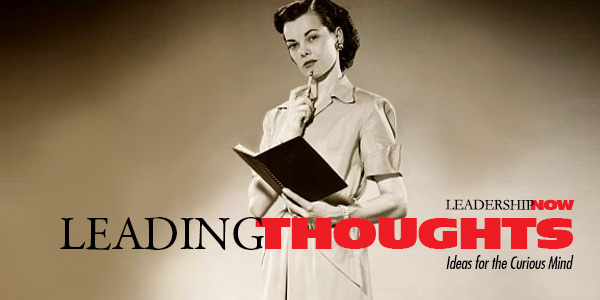
IDEAS shared have the power to expand perspectives, change thinking, and move lives. Here are two ideas for the curious mind to engage with: Paul Schmitz on the idea that everyone leads: “This does not mean that everyone can lead any effort, organization, or institution, or that one who is a good leader in one context is a good leader in other contexts. It does mean that a great leader can come from anywhere, and that unless more people believe in themselves, take responsibility, and work with others to make a difference, we all lose out from the lost potential.” Source: Everyone Leads: Building Leadership from the Community Up Adam Galinsky and Maurice Schweitzer on the need for a clear hierarchy: “Co-leadership can kill both ideas and people, because it creates uncertainty over who is really in charge. Of course, co-led teams are not always ineffective and dangerous. But when there is not clear division of labor among these leaders, coordination becomes difficult, patterns of deference can disappear, and conflict can erupt.” Source: Friend & Foe: When to Cooperate, When to Compete, and How to Succeed at Both Look for these ideas every Thursday on the Leading Blog. Find more ideas on the LeadingThoughts index.
Posted by Michael McKinney at 07:13 AM
10.20.23

The Flexible Method: How to Survive and Thrive Through the Next Crisis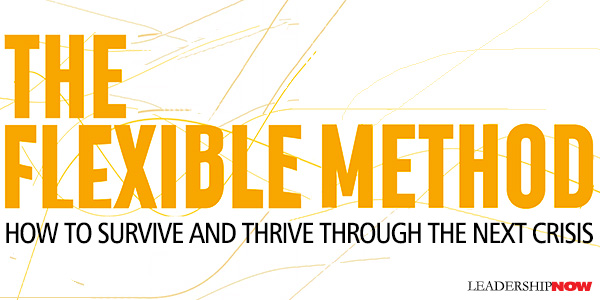
SOMETIMES you can see it coming. More often than not, you can’t. But you can be prepared and follow a method to futureproof your business against the next crisis. James Burstsall, the CEO of Argonon, an independent production group, offers what he calls The Flexible Method. It is a way through the next crisis you will face. Argonon fared better during the pandemic than most of the other organizations in their industry using this method. A crisis is a time for deepening your core values, not abandoning them. The importance of maintaining your values during a crisis is a key factor for taking your team on the difficult journey with you. In crises, winning organizations act like start-ups. Prepare Now The first step is to prepare. So, the time is now to think about this. Have a disaster recovery plan. [template] Develop a procedure for every contingency. Create a flexible mindset culture. Adapt. Stay aware of world events and heed the signs. When Disaster Strikes Always Put Your People First. Your people are everything. When disaster strikes, get them to safety—you need them healthy, aligned, and ready. Leave no one behind. “For teams to be resilient, they have to feel it is worthwhile to make the effort to be so. They are more likely to do this if they are being valued and supported in a people-focused company.” Gather Your Generals. Gather together and empower your bravest thinkers. Listen with an open-mind and be open to radical ideas. Lead with calm and purpose—not overreacting. Make each action part of an evolving narrative towards deadlines that everybody can understand and buy into. Communicate, Communicate, Communicate. During a crisis, people have a heightened need for good, honest communication that gives them information, guidance, helps them adjust and cope emotionally.” Be honest and transparent. That doesn’t mean spilling your guts. Protect Your Cash. Eliminate all unnecessary expenses. Talk with debtors, creditors, suppliers, and the bank. Negotiate flexible terms. Look for hidden assets that you can repurpose. Learn From History. Take lessons from the past to constructively plan for the future. “The experience and learnings we are still distilling will prove invaluable tools in the future.” Hold On to Your Values. “Core values cut across all departments of your business and can unify otherwise separate entities, bringing the whole together.” They are your compass in decision-making. Collaborate and Connect. The temptation is to baton down the hatches and wait for the storm to pass—but both experience and research from the pandemic and the 2008 financial crisis show that collaborating with others can be a path to growth during disaster. Adapt. Be open to new ideas. Understand, too, that some people will not like some of the decisions. Act like a start-up. Supercharge Your Creativity. When adapting is no longer enough, you are going to need an arsenal of fresh ideas. Have the confidence to innovate, think, and experiment. Seek Help. “In a crisis, it is a positive strength to reach out for help rather than stubbornly struggle alone. It demonstrates that you are a realist and a pragmatist. Both of these positions are core tools of the Flexible Method.” Take whatever the government offers and challenge them for more. Find other backers. Seek non-financial help, such as legal, commercial, and medical expertise. Care For Your Team’s Mental Health. Another way of putting people first. Be on the lookout for those who are struggling. Be empathetic and listen. Mind Your Own Health. “Caring for yourself can boost your productivity, memory, focus, creativity, empathy, and decision-making—in other words, your overall effectiveness as a leader.” Emerging From a Crisis Set Your Future Course. Emerging from a crisis, assess the post-crisis landscape and identify new opportunities. Rest, Reward, Review. Thank your exhausted team and encourage them to take a break. Reward them authentically for their tireless work and dedication. Assess what you did right and what you can do better next time. Things have changed, so capture the learnings and forge them into your organization’s new DNA. Then, get back to prepare for the next crisis. 
Posted by Michael McKinney at 07:14 AM
10.19.23

Leading Thoughts for October 19, 2023
IDEAS shared have the power to expand perspectives, change thinking, and move lives. Here are two ideas for the curious mind to engage with: Richard Winters on collaborative decision-making: “A top-down process for decision-making by edict may work fine in predictable situations or during times of crisis. But when it comes to making strategic decisions in complex and unpredictable environments, the all-too-familiar method of reflexive decision-making breaks down and delivers poor results. Our expertise and our power to decide get in the way of optimal outcomes. This occurs not only when we lead groups of people, but also when we have one-to-one conversations with colleagues.” Source: You're the Leader. Now What? Leadership Lessons from Mayo Clinic Mark Sanborn on pulling others to achieve their potential: “Nobody likes to be driven by someone else; it feels like being pushed. But when someone can show us how to be bigger on the inside—in our attitude and mindset—that can help attract or pull us toward what we can become.” Source: The Encore Effect: How to Achieve Remarkable Performance in Anything You Do Look for these ideas every Thursday on the Leading Blog. Find more ideas on the LeadingThoughts index.
Posted by Michael McKinney at 06:39 AM
10.17.23

5 Leadership Lessons: The Leader’s Voice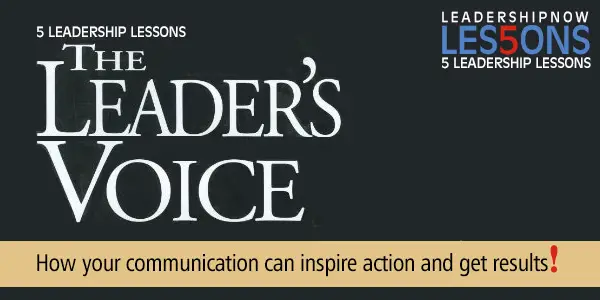
LEADERS HELP FOLLOWERS find causes worth signing up for—something they can make an emotional investment in. That highlights the importance of leadership communication. Effective leaders communicate who they are and move the whole organization. Boyd Clarke and Ron Crossland are the ones who said, “The biggest problem with leadership communication is the illusion that it has occurred.” Here are five takeaways from their book The Leader’s Voice: How Your Communication Can Inspire Action and Get Results!

Posted by Michael McKinney at 03:23 PM
10.13.23

The Unlocked Leader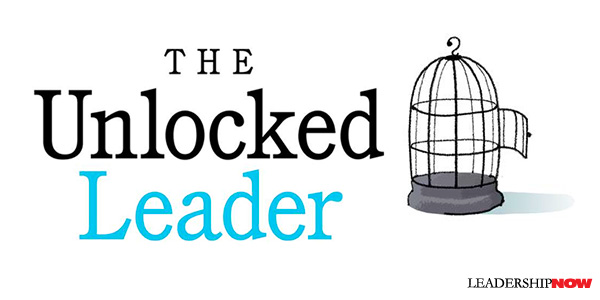
TOO MANY LEADERS have not made the journey from their head to their heart. It is not uncommon to assume that to be effective, leaders must be superhero leaders. That is, they must be infallible, unflappable, and fearless. Hortense Le Gentil writes to dispel that notion in The Unlocked Leader and become what she terms human leaders. Hiding behind their superhero leader façade, they’re not sure how they can connect differently with people at work. They don’t know how to be vulnerable, authentic, and empathetic in a way that unleashes the best in others. In short, they don’t know how to be human leaders. The transformation from superhero leader to human leader is a deep inside job and not the application of gimmicks and smooth words. It becomes a way of being both in and out of work. It begins with understanding the mindsets that do not serve us well —mindtraps—then shifting those mindsets and building new ones. Le Gentile takes us through that transformative process in depth. There is no shortcut. She writes that there are four practices that strengthen our ability to connect with others: Learn to Listen More and Speak Last Human leaders have moved from quarterback to coach. “Their job is no longer to handle the ball and score points; it is to inspire and support the players to give the best of themselves and make sure they play as a team so together they can score points.” This is most often facilitated by listening more and talking less. Positioning yourself to speak last also encourages listening more. Cultivate Your Empathy Empathy is the “ability to connect to other people’s emotions or experience.” To see the world through their eyes. Focus on commonalities and not differences. Empathy also means understanding how you affect others. “Your empathy practice also includes adjusting what you say, how you say it, and what you do accordingly.” At the same time, she cautions that “Being able to connect to someone else and experience the world from their perspective doesn’t mean accepting or excusing everything they do or say. Empathy doesn’t exclude showing tough love when necessary.” Practice and Role-Play Conversations Connecting with others on a new level may feel awkward at first. “Role-playing various scenarios eases the anxiety of the unknown and makes it easier to react in the best possible way in the heat of the moment.” Eventually, it will become who we are. Learn to Set and Maintain Boundaries A lot has been said about the value of authenticity and vulnerability in leadership to better connect with others. But vulnerability without boundaries is not vulnerability. She writes, “Opening a door so people at work can peek into our head and our heart, however, doesn’t mean sharing all our emotions and all our thoughts with everybody. It also doesn’t mean abandoning our privacy or forcing colleagues and team members to let go of theirs.” To establish proper boundaries, the following questions are helpful: 1. Is this relevant? Why are you telling the story? What is the message you are trying to share? 2. It is helpful? A key question. “Effective human leaders do not lose sight that the point of being authentic and vulnerable is to support, encourage, and motivate people by creating and strengthening human connections. Offloading your anxiety or frustration onto your colleagues in the name of authenticity may make you feel better, but that kind of authenticity isn’t helpful to anyone else and therefore defeats the purpose.” She adds, “Sharing about yourself without showing interest in, and care for, others doesn’t strengthen human connections: it only screams, ‘me, me, me!’” 3. Am I undermining my competence as a leader? “Saying you’re out of your depth or worried about the future is likely to fill your team with anxiety and make them wonder whether you should be in charge and why they should follow your lead. Asking for help to become better at what you do, however, sends the message that you’re not perfect but that you are keen to keep improving.” 4. Am I still feeling professional and comfortable? “If you’re sharing more than you’re comfortable with, you’re no longer authentic. Instead of being yourself, you become someone who’s trying too hard to be vulnerable—which, ironically, comes across as painfully inauthentic.” Human leadership doesn’t start and stop at the office: It happens everywhere and in each moment. It also happens at home, and those who’ve embarked on the journey can attest to the enormous difference it has made in their personal life. 
Posted by Michael McKinney at 10:26 AM
10.12.23

Leading Thoughts for October 12, 2023
IDEAS shared have the power to expand perspectives, change thinking, and move lives. Here are two ideas for the curious mind to engage with: Former Vanity Fair editor-in-chief Graydon Carter on how careers evolve: “Nobody knows what they’re doing at first. You have to find something you are interested in, throw yourself at it, do the best you can, and pick things up as you go along. I never saw myself as having a career path. I’ve sort of muddled through from one thing to the next and, for most people, that’s just the way careers evolve.” Source: Getting There: A Book of Mentors by Gillian Zoe Segal Fashion designer Rachel Zoe on career goals: “I never made a blueprint for my future, and I don’t believe in setting rigid career goals. Career paths usually require a lot of trial and error, and you have to allow yourself the freedom to go with the flow. Sometimes, you think you should go in one direction, but it doesn’t work out or feel right. Occasionally, a better opportunity presents itself and you start over in a different area. If you set a goal that isn’t fairly realistic, you could be setting yourself up for failure—which can really set you back emotionally.” Source: Getting There: A Book of Mentors by Gillian Zoe Segal Look for these ideas every Thursday on the Leading Blog. Find more ideas on the LeadingThoughts index.
Posted by Michael McKinney at 12:49 PM
10.10.23

quickpoint: Responsibility Develops Power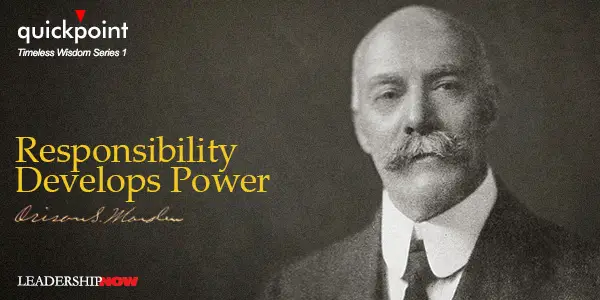
IN AN ESSAY published in 1908, Orison Swett Marden encourages leaders to give responsibility to their employees—to develop leaders at all levels. Give power so that others may grow. Below are thoughts adapted from that essay that are as relevant today as they were when they were written.

Posted by Michael McKinney at 09:08 AM
10.05.23

Leading Thoughts for October 5, 2023
IDEAS shared have the power to expand perspectives, change thinking, and move lives. Here are two ideas for the curious mind to engage with: Brian Tracy on how to test the validity of your excuses: “There is a way that you can test your excuses to see if they are valid. It is simply to ask yourself, ‘is there anyone else who has my same excuse but who is moving ahead and succeeding nonetheless?’ Source: Crunch Point: The 21 Secrets to Succeeding When It Matters Most Google’s former Jolly Good Fellow Chade-Meng Tan on self-confidence: “The type of deep self-knowledge and blatant self-honesty needed for sustainable self-confidence means having nothing to hide from oneself. It comes from accurate self-assessment. If we can assess ourselves accurately, we can clearly and objectively see our greatest strengths and our biggest weaknesses. We become honest to ourselves about our most sacred aspirations and darkest desires. We learn about our deepest priorities in life, what is important to us, and what is not important that we can let go. Eventually, we reach a point where we are comfortable in our own skins. There are no skeletons in our closets we do not already know about. There is nothing about ourselves we cannot deal with. This is the basis of self-confidence.” Source: Search Inside Yourself: The Unexpected Path to Achieving Success, Happiness (and World Peace) Look for these ideas every Thursday on the Leading Blog. Find more ideas on the LeadingThoughts index.
Posted by Michael McKinney at 11:03 AM
10.01.23

First Look: Leadership Books for October 2023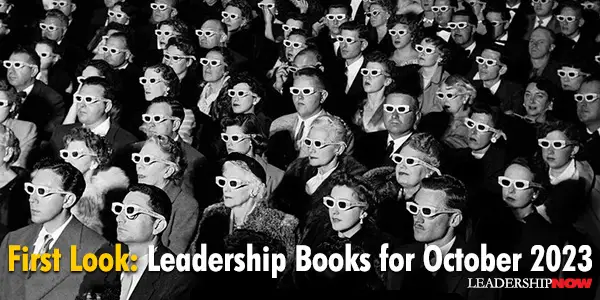
HERE'S A LOOK at some of the best leadership books to be released in October 2023 curated just for you. Be sure to check out the other great titles being offered this month.
We live in a world that’s obsessed with talent. We celebrate gifted students in school, natural athletes in sports, and child prodigies in music. But admiring people who start out with innate advantages leads us to overlook the distance we ourselves can travel. We underestimate the range of skills that we can learn and how good we can become. We can all improve at improving. And when opportunity doesn’t knock, there are ways to build a door. Hidden Potential offers a new framework for raising aspirations and exceeding expectations.
Throughout his thirty years of work as a mindset expert and leadership coach, Erwin Raphael McManus has been obsessed with these questions: Why do some people succeed despite having all the odds stacked against them? How do others achieve the unthinkable, only to watch their lives slip away? Are there mental structures for failure and success? McManus has come to realize that too many of us have “near-life” experiences. We almost pursue our dreams. We almost make the decision that changes everything. We are always one choice away. In Mind Shift, McManus brings together twelve mental frameworks that have helped some of the most accomplished people on earth create internal structures of success.
Speed has gotten a bad name in business, much of it deserved. When Facebook made "Move fast and break things" an informal company motto, it fueled a widely held belief that we can either make progress or take care of people, one or the other. That a certain amount of wreckage is the price we have to pay for inventing the future. Leadership experts Frances Frei and Anne Morriss argue that this belief is deeply flawed—and that it keeps you from building a great company. Helping executives and entrepreneurs solve their toughest problems over the past decade, Frei and Morriss learned that the trade-off between speed and excellence is false. The best leaders solve hard problems with fierce urgency while making their organizations—employees, customers, and shareholders—even stronger. They move fast and fix things.
Ron Shaich, founder and former CEO of Panera Bread, is a business visionary who has been part of building three iconic restaurant brands: Au Bon Pain, Panera Bread, and now Cava. How did Shaich succeed repeatedly in such a notoriously tough industry? By discovering today what will matter tomorrow and never hesitating to undertake sweeping transformations in order to get the job done. He offers clear-headed lessons for the entire life cycle of an enterprise, from bootstrapping a startup to going public to managing large companies to selling a business. And the relevance of his message doesn't end in the boardroom. Telling yourself the truth, knowing what really matters, and getting it done is the path to creating and sustaining a meaningful life, a market-leading business, and even a healthier society.
In Leadership Revolution, executive coach Lori Mazan delivers an exciting new approach to leadership development tailor-made for the 21st century. Drawing on lessons learned from coaching top executives for 25 years, you’ll learn how to attract and retain talent by accelerating and individualizing their professional growth and how to re-think leadership in the new remote and hybrid work environment. An invaluable and practical strategy guide for leadership and talent development, Leadership Revolution is the perfect resource for managers, executives, coaches, and other business leaders looking for proven ways to shape the next generation of leaders in their firms.
How do some of the world's top leaders unlock the potential of others, create trust, and lead through change? Jacob started out with one basic question: Is vulnerability the same for leaders as it is for everyone else? It turns out that it's not. On August 20, 1991, Hollis Harris, the CEO of struggling Continental Airlines told his 42,000 employees to pray for the future of the company. The next day he was fired. What Hollis did was vulnerable, but it was not leadership. While vulnerability cripples some leaders, others tap into it and use it as a superpower. Vulnerability alone makes leaders seem incompetent. Competence on its own makes it hard for leaders to connect with their people. The key is to develop both competence and vulnerability, what Jacob calls "The Vulnerable Leader Equation."
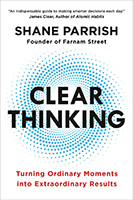 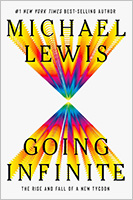 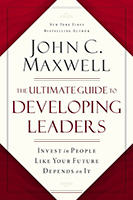 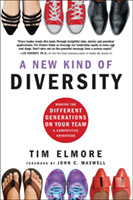
“... a mind needs books as a sword needs a whetstone, if it is to keep its edge.” — George R.R. Martin, A Game of Thrones
Posted by Michael McKinney at 11:50 AM
|
BUILD YOUR KNOWLEDGE


How to Do Your Start-Up Right STRAIGHT TALK FOR START-UPS 
Grow Your Leadership Skills NEW AND UPCOMING LEADERSHIP BOOKS 
Leadership Minute BITE-SIZE CONCEPTS YOU CAN CHEW ON 
Classic Leadership Books BOOKS TO READ BEFORE YOU LEAD |
|